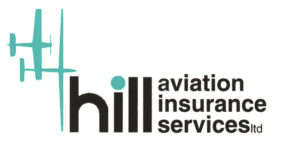Health & Safety
The Health & Safety Executive website notes how health and safety laws should not be a barrier to organising and running amateur sports activities that are an important part of community life.
This webpage aims to support gliding clubs with useful guidance on NON-FLYING Health and Safety matters.
Guidance on FLYING safety/risk management including links to information and guidance is available on the BGA Safety webpage.
The HSW Act and safety when flying
Health and safety law does not cover safety matters arising out of the sport or activity itself, ie flying gliders. Please note that a duty of care under the common (civil) law may apply.
Gliding participants are subject to statutory (ANO and EASA) rules and non-statutory (BGA) rules and guidance, which include topics like supervision, training, emergency procedures, accident investigation, and safety education. Some of these rules and guidance may go beyond the requirements of health and safety legislation.
Laws and Rules can be viewed here.
BGA Safety webpage can be viewed here
Employers/self-employed/volunteer organisations with employees running sports clubs
The Health and Safety at Work (HSW) Act 1974 (‘the Act’) and the regulations made under it, apply to club organisers. The law requires them to do what is reasonably practicable1 to ensure peoples health and safety. The Act is the definitive requirement and supercedes any guidance published here.
The Act sets out the general duties that employers have towards their employees whilst at work. The Act also requires employers and the self-employed to protect people other than those at work eg volunteer staff like coaches, club members, visiting teams and spectators. These people should be protected from risks to their health and safety arising out of, or in connection with, their club’s work activities.
Health and safety law does not generally apply to volunteers running a club with no employees, unless the club has responsibility for premises like a clubhouse or playing field. However, volunteers can be considered to be employees; club insurance brokers can advise.
It is safe to assume that Health and Safety Law applies to most gliding clubs non-flying activities.
1 Reasonably practicable: ‘This means balancing the level of risk against the measures needed to control the real risk in terms of money, time or trouble. However, you do not need to take action if it would be grossly disproportionate to the level of risk’
Volunteers running sports clubs
Anyone (including volunteers) with control of premises like a clubhouse or site (or airfield) has a duty to see that the premises, access to them and equipment and substances provided are safe for the persons using them so far as is reasonably practicable1. Often this is a shared duty between the premises owner, a management committee and users. This is a key issue for gliding clubs.
The extent of a club’s legal duty will depend on the level of control it has over the premises and the type of equipment or substances provided. For example, if your club owns or manages the premises, then you would be expected to keep the premises and any equipment provided in good repair. If your club uses equipment then you would be expected to take reasonable steps to check it is safe to use, eg a club winch is in reasonable repair including any cable guards, steps, etc.
Guidance on how health and safety law applies to premises like clubhouses
HSE publication ‘Health and Safety Made Simple’
How to Manage the Health and Safety Risks
Understanding and controlling the risks through precautions that everyone is aware of and complies with are key to success. Assessing the risks is a significant element of managing the risks.
Assessing Risks
You don’t need to be a Health and Safety expert to assess risks. Here are the HSE’s 5 steps to risk assessment (with a single example risk topic in brackets);
- Identify the hazards (eg falling/moving winch cables)
- Decide who might be harmed and how (eg winch driver, tow car driver, people at launch point, pedestrians near the airfield)
- Evaluate the risks and decide on precautions (eg club member training, winch location, and signage)
- Record significant findings
- Periodically review and update
It makes sense to document that specific risk assessment processes have been carried out. That documentation can be updated as required at the review step.
Children
It should be noted that children, ie those under 18, will have less awareness of risk than experienced adults. ‘Reasonably practicable’ in that case probably means that a different level of training may be required. Children under 16 should not drive or help to operate complex machinery, eg a winch (HSE re Agriculture – children and public safety).
Training – and Recording Training
Training club members to be aware of ground hazards and how they are mitigated is reasonably straightforward. The most effective way to complete the training is ‘on site’ and particularly so when simple guidance is provided to the person delivering the training. A training record card can provide helpful prompts as well as record completion of the training.
BGA Generic Ground Training Record
The BGA supplies a generic ground training record card that can be modified to suit any gliding club operation. You can view the card here.
Example Detailed Training Records
The Nene Valley Gliding Club has produced a package of ground training record cards designed to meet their needs. The club has a large percentage of their club membership who are aged under 18. You can view the documents here.
Education and Awareness
There is a need to periodically update existing club members on Health and Safety risks and how they must be managed. That includes long standing and experienced members. Temporary members usually need close supervision as, despite any safety briefings that take place ahead of using club facilities, it is unreasonable to expect them to be as aware as experienced members.
Other links
The Health and Safety Executive website can be viewed here.

